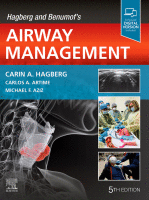Physical Address
304 North Cardinal St.
Dorchester Center, MA 02124

Key Points Airway societies exist to help patient care by improving the quality and safety of airway management practices, as well as disseminating educational and research-related activities through annual meetings (workshops, lectures) and educational forums. Given that there is still…

Key Points Adequate documentation of airway management outcomes supports the goal of never having an unanticipated difficult airway. Parallel documentation of data in different sections of an electronic medical record allows for cross-checking of information, potentially increasing its reliability, but…

Key Points Conducting airway research is difficult, partly because of the low incidence of truly difficult airways and the ethics of exposing patients to unnecessary risk (e.g., a randomized controlled trial [RCT] in front-of-neck access). Although a meta-analysis of RCTs…

Key Points The consequences of a difficult airway (DA) may include minor or major adverse medical events or death, professional liability to the practitioner, and direct and indirect costs to the patient and healthcare system. DA still accounts for the…

Key Points Maintaining expertise in airway management is the responsibility of every airway practitioner. This responsibility extends throughout one’s professional career and reaches far beyond the formative years of medical training into lifelong learning to stay competent. The essential ingredients…

Key Points Serious complications of airway management result from not recognizing the degree of airway difficulty. To minimize injury to the patient, the airway practitioner should examine the patient’s airway carefully, identify potential problems, devise a plan that involves the…

KEY POINTS Careful planning of tracheal extubation or tube exchange is as vital as the planning required for intubation. Airway complications are as common after tube removal as during insertion. Anticipating a successful extubation is an inexact science. Any emergent…

KEY POINTS The most reliable method for determining the intratracheal location of an endotracheal tube (ETT) is direct visualization of the tube passing through the vocal cords; flexible scope assessment can define the specific location of the ETT in the…

Key Points The indications for mechanical ventilation include hypoxemic and hypercapnic respiratory failure, altered mentation with patient inability to protect the airway, hemodynamic instability, and maintenance of adequate oxygenation and ventilation during deep sedation, general anesthesia, or neuromuscular blockade. Positive…

Key Points Polyurethane endotracheal tube (ETT) cuffs that have high-volume/low-pressure (HVLP) cuffs can conform to the irregular borders of the tracheal lumen and, therefore, are more effective at preventing microaspiration. ETT placement has mechanical and physiologic consequences. Vigilant surveillance of…